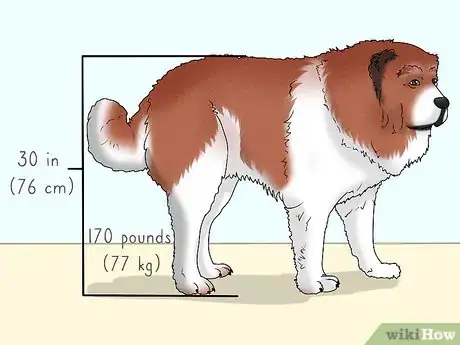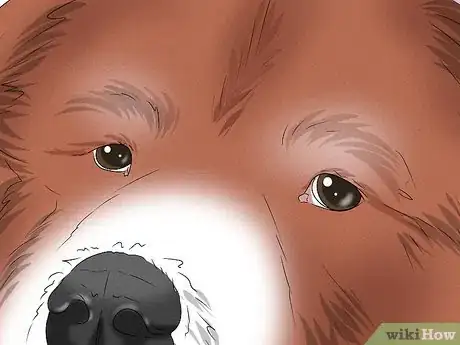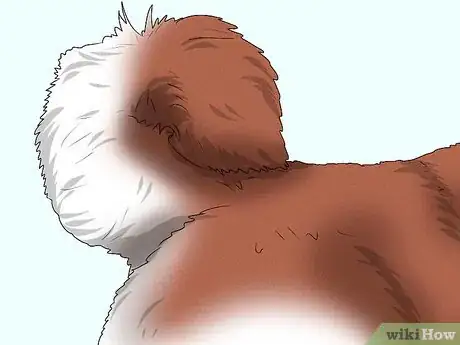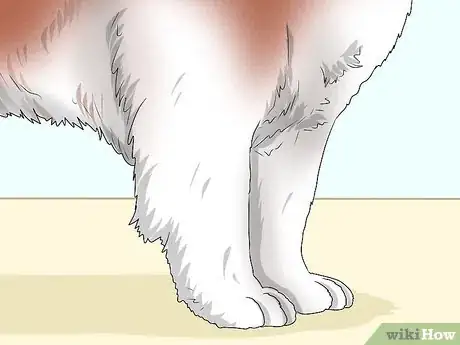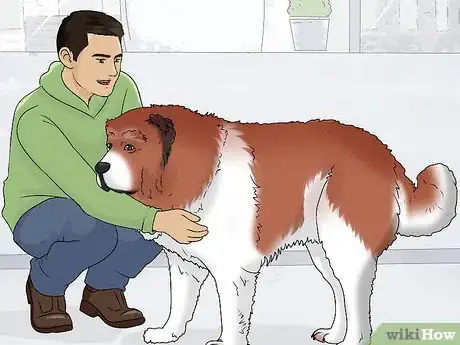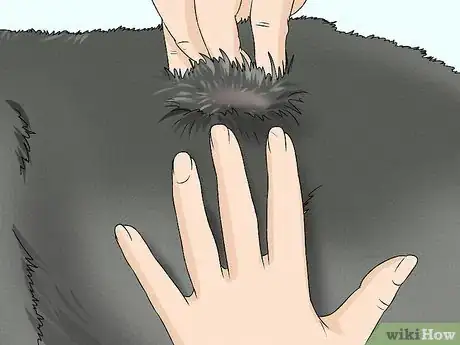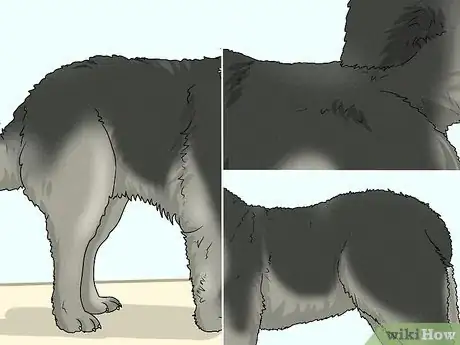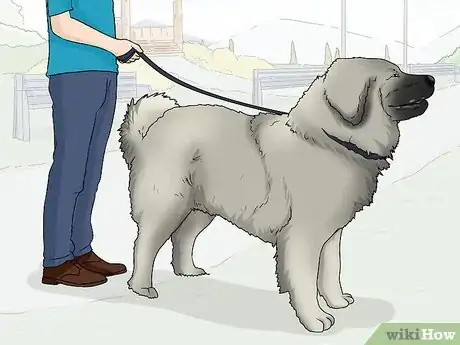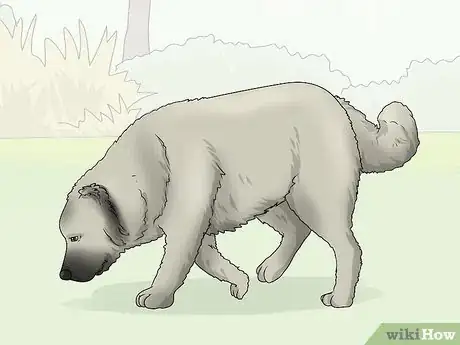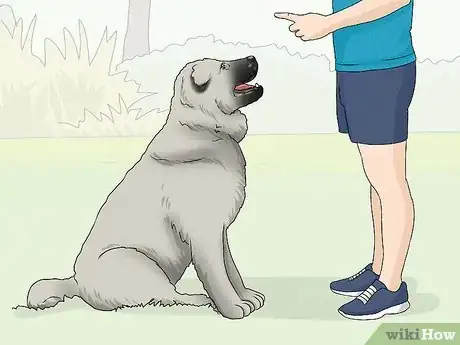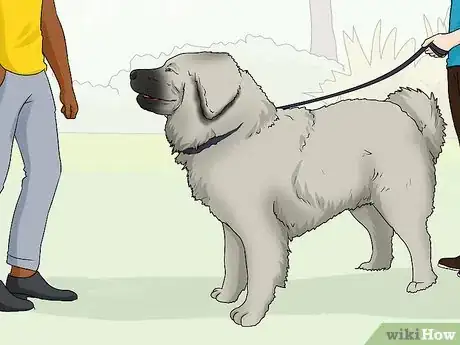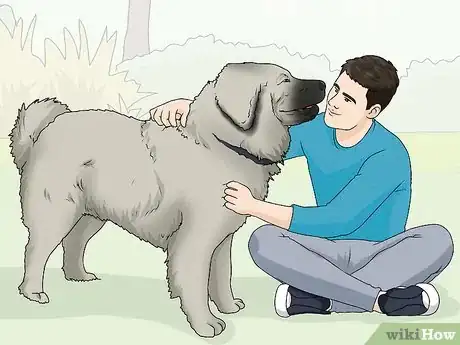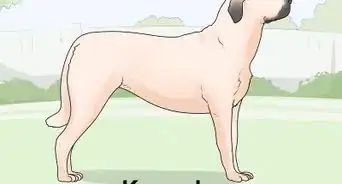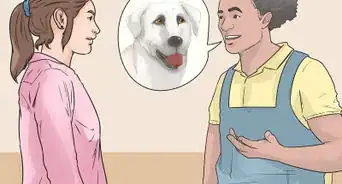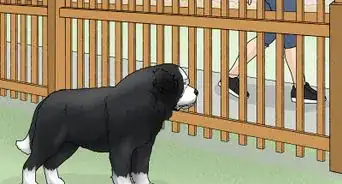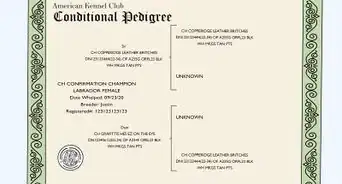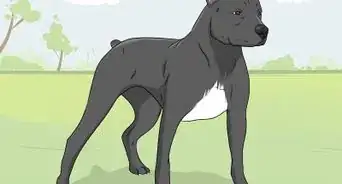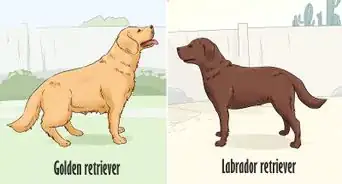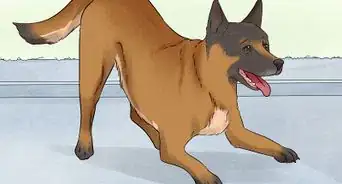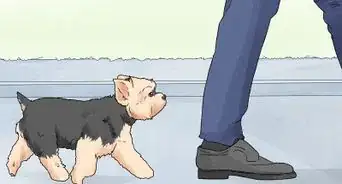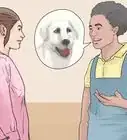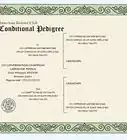wikiHow is a “wiki,” similar to Wikipedia, which means that many of our articles are co-written by multiple authors. To create this article, volunteer authors worked to edit and improve it over time.
This article has been viewed 12,708 times.
Learn more...
The Caucasian Shepherd dog, also called the Caucasian Ovcharka, is a working dog from the Caucasus mountains.[1] They have been around since ancient times, working to guard dwellings, herds, and flocks from predators.[2] Caucasian Shepherds are thought to be part of the bloodline of many breeds throughout history, and thus, they share some similarities with other breeds of dog. This wikiHow will help you recognize traits of the Caucasian Shepherd breed so you can distinguish them more easily.
Steps
Identifying Structure
-
1Consider the size of the dog. Caucasian Shepherds are among the largest of dog breeds, with a height of 23–30 inches (58–76 cm). They can weigh anywhere from 99 to 170 pounds (45 to 77 kg) when fully grown.[3]
-
2Look closely at the dog's head. The head of a Caucasian Shepherd is massive and broad in the cheekbones with an almost flat forehead. When it is viewed from above, it resembles a broad-based wedge.[4]Advertisement
-
3Check the muzzle. Caucasian Shepherds have broad, deep muzzles that gradually taper toward the nose. The nose is large and black in color with open nostrils and a broad bridge. Caucasians have strong jaws, thick and close-fitting lips, and teeth that meet in a scissors or pincer (level) bite.[5]
-
4Inspect the eyes. Caucasians have oval eyes of a moderate size. They are wide, obliquely placed, and not too deep set. The eyes may be any shade of brown from dark brown to a hazelnut color, with close-fitting black eyelids. The eyes give the dog an inquisitive yet attentive and serious expression.[6]
-
5Take notice of the dog's ears. The ears of a Caucasian Shepherd are moderately sized and triangular. They are set high and wide and are thick, the inner part lying closely to the cheeks. The ears are traditionally cropped in their original country but may be natural.[7]
-
6Find the tail. Caucasians have high-set tails that may be either sickle curved or curled. The tail hangs down and reaches the hocks in repose but may be carried above the backline when the dog is alert.[8]
-
7Examine the paws. The front and back paws of a Caucasian Shepherd resemble one another. They are well-knit, well-arched, large, and rounded.[9]
-
8Take the dog's overall build into account. Caucasian Shepherds appear large, strong, and harmoniously built, with powerful muscles and plenty of bone. They seem slightly rectangular in form. Caucasians are broad, well-muscled, and well-balanced, having strongly muscled shoulders, a broad chest, parallel forelegs, a straight back, and moderately wide hindquarters. They walk with an unhurried elastic gait.[10]
Checking the Coat
-
1Observe the coat's appearance and texture. Caucasian Shepherds have straight and coarse coats that stand off, with a well-developed undercoat. The head and forelegs are covered in a shorter, thicker coat, while the tail is covered with a dense coat, appearing furry and thick. The coat forms brushes on the ears, a mane around the neck, and trousers on the backs of the thighs. The length of the guard and undercoats combined does not reach less than 5 cm (2.0 in).[11]
-
2Note the condition of the skin. The skin of a Caucasian Shepherd is thick and sufficiently elastic. It does not contain any wrinkles or folds.[12]
-
3Look at the coat color. Caucasian Shepherds may be seen with a solid colored, piebald, or spotted colored coat. This includes diluted black, black in any combination, blue, or liver brown. Caucasian Shepherds may be any solid color excluding black.[13]
Being Watchful of Temperament
-
1Look for protective traits. Caucasian Shepherds live up to their intimidating appearance. They are known to be fierce and protective when a potential threat presents itself. Their protective personality may lead to frequent barking and distrust toward strangers.[14]
Did you know? Caucasian Shepherds were bred for many traits that made them superb guardians, including self-confidence, fearlessness, sharp hearing, good vision, and physical power.[15]
-
2Recognize intelligence. Caucasians have high levels of intelligence, which may enable them to be quick but stubborn learners. Their ability to sniff out threats can make them keen watchdogs if barking is not a bother.[16]
-
3Take note of independence. As protective guardians, Caucasian Shepherds are alert and demonstrate independence. This may complicate training, as they are not willingly submissive to following directions.[17]
-
4Check for loyalty. Despite their independence, Caucasians are loyal family dogs. They are distrusting of strangers but form strong bonds with their family members. Because of this, Caucasians are willing to watch over their family and defend them if a threat arises.[18]
-
5See if the dog is laid-back. When there is nothing to guard, Caucasian Shepherds are more laid-back, sweet, and relaxed. They can be very loving dogs when interacting with those close to them.[19]
Community Q&A
-
QuestionAt what age would a Caucasian shepherd start barking?
 LinnieTop AnswererMost dogs develop their bark by the time they are 16 weeks old, though some may begin "yipping" as early as after eight weeks. Caucasian shepherds are generally quiet dogs, so they are not heard barking frequently unless they are poorly socialized or protecting their family.
LinnieTop AnswererMost dogs develop their bark by the time they are 16 weeks old, though some may begin "yipping" as early as after eight weeks. Caucasian shepherds are generally quiet dogs, so they are not heard barking frequently unless they are poorly socialized or protecting their family.
References
- ↑ https://www.akc.org/dog-breeds/caucasian-shepherd-dog/
- ↑ https://www.akc.org/dog-breeds/caucasian-shepherd-dog/
- ↑ https://www.akc.org/dog-breeds/caucasian-shepherd-dog/
- ↑ http://www.fci.be/Nomenclature/Standards/328g02-en.pdf
- ↑ http://www.fci.be/Nomenclature/Standards/328g02-en.pdf
- ↑ http://www.fci.be/Nomenclature/Standards/328g02-en.pdf
- ↑ http://www.fci.be/Nomenclature/Standards/328g02-en.pdf
- ↑ http://www.fci.be/Nomenclature/Standards/328g02-en.pdf
- ↑ http://www.fci.be/Nomenclature/Standards/328g02-en.pdf
- ↑ http://www.fci.be/Nomenclature/Standards/328g02-en.pdf
- ↑ http://www.fci.be/Nomenclature/Standards/328g02-en.pdf
- ↑ http://www.fci.be/Nomenclature/Standards/328g02-en.pdf
- ↑ http://www.fci.be/Nomenclature/Standards/328g02-en.pdf
- ↑ https://www.dogtemperament.com/caucasian-shepherd-dog-temperament/
- ↑ https://www.akc.org/dog-breeds/caucasian-shepherd-dog/
- ↑ https://www.dogtemperament.com/caucasian-shepherd-dog-temperament/
- ↑ https://www.dogtemperament.com/caucasian-shepherd-dog-temperament/
- ↑ https://www.dogtemperament.com/caucasian-shepherd-dog-temperament/
- ↑ https://www.dogtemperament.com/caucasian-shepherd-dog-temperament/
